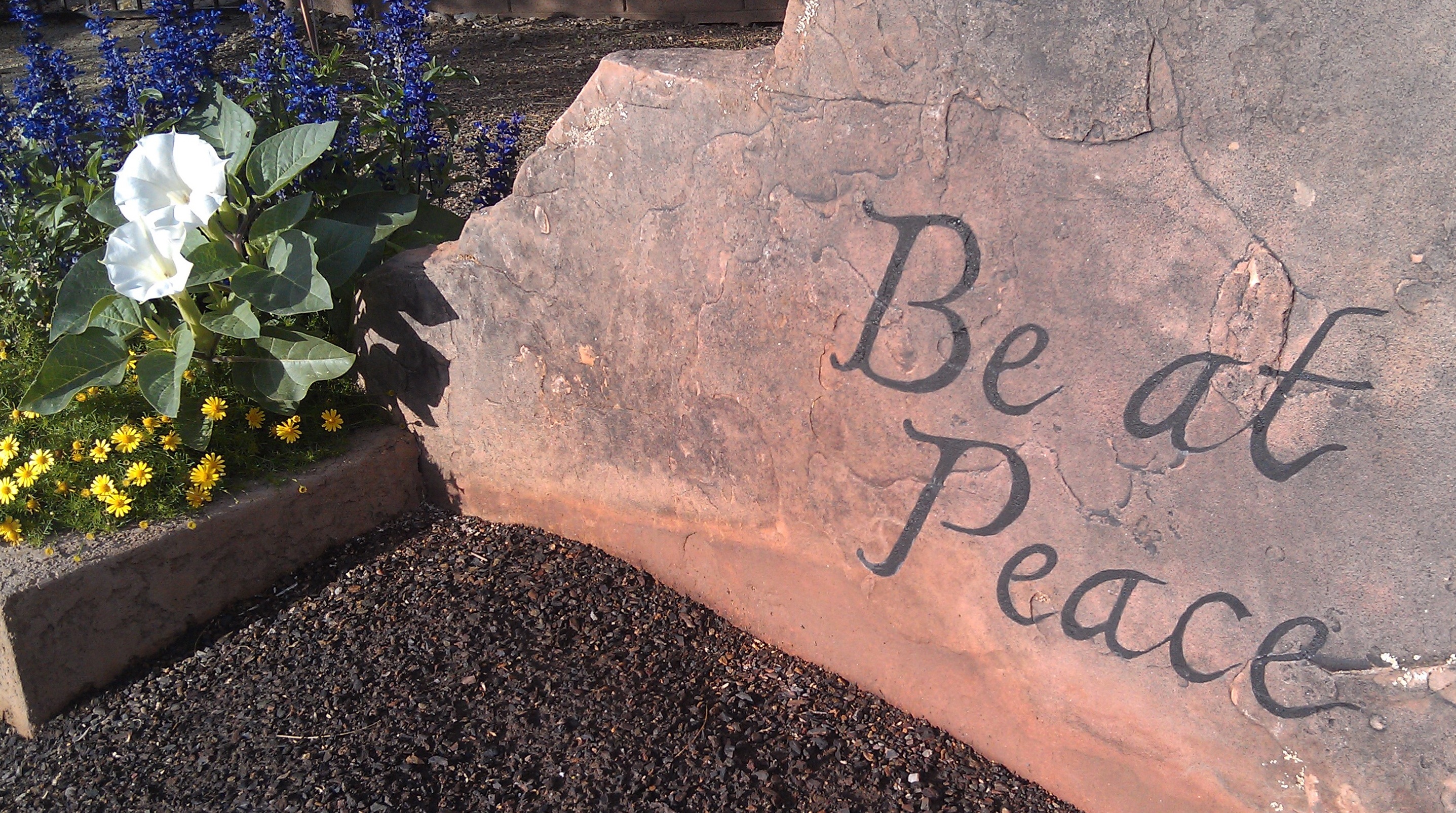Exhale… Relax… Release… by Lesley A. Jackson
I was in a yoga class not too long ago when the reality of how much our bodies relax on the exhale finally got through to me. The understanding came on many levels. Physically we can go deeper into yoga postures and get more benefit if we relax as we exhale. What struck me like a bolt of lightening was how many levels this is true. An exhalation is a release. The natural thing for a body to do when exhaling is to relax, at least that is what I am told. I cannot say that has been true for my body all along. As a child I developed asthma. I have made a lot of life decisions that have enabled me to treat it almost 100% holistically. One of the most effective methods for treating it is to exhale DEEPLY. To force all the air out of my lungs, over and over again. It is a scary proposition for someone with asthma to do this because our fear is that we will never get that next lung full of air. For me exhaling is scary. Is it scary because I have asthma, or do I have asthma because it is scary? Most likely the answer is, both. The mind body connection continues to amaze me. I am not proud to say that the older I got, the more things that left my life had claw marks on them. I failed to see that they had lost their relevance and usefulness long before I grudgingly let them out of my tight little grip. The biggest example of that is my marriage. My ex-husband had been a recovering addict, after we had been married for 5 years, he relapsed. Originally I had said that a relapse was cause for divorce that I would not stay in a marriage with addiction. When he relapsed, all I wanted was my old life back and for the next four years I put up the best effort I had to get him sober and get my life back. When I finally said “Uncle. This is bigger and stronger than I am, and my old life is so far in the past I barely remember it any more.” I was a shadow of the person I had been and required a lot of Shamanic Breathwork, Yoga, and Life Coaching to get me to see that my desire to have reality be something other than what it was, had been so strong I had made all sorts of decisions that were plain destructive to both of us. That my friends, is denial. Sometimes we can get so attached to what was, that we fail to see that we are hanging on to a thing, an idea, a relationship, or an identity that hasn’t fit for a long time. After the marriage was over I invested so much memory and meaning into the things we’d had that, even though I moved states three times in three years, I drug all of that furniture, boxes, and knick-knacks over all those miles and could not let go. January 3rd, of this year, my dear, dear dog and best friend of 9 years was diagnosed with Lymphoma. My vet said, “If I had to give it a number I would say three months.” He passed away on March 8th only two months later. I feared that with my past behavior, I would find some new way to really make a mess of things with Riley’s illness. It took some time, but one day, I knew was going to miss him, and I was going to be OK. I also knew that all that stuff I had been hauling around thinking it mattered so much, no longer mattered at all. I have been purging, cleaning and releasing my belongings in cycles ever since. The more I release, the more I relax. The more I relax, the more I realize I still have to release. Which starts another cycle of purging. I have found that when I get down to the belongings that I truly like, I no longer have to sift through all the things I never really use to find them, and I feel so much more abundant. It was during this purging phase that my body relaxed on that exhale in that yoga class, and I got it! This is natural. Release is as natural as breathing, and it’s relaxing. So I have learned that if I fight the release, and hope to outsmart the sun the moon and the stars, when it is time. I will suffer. I found this quote from Lao Tzu, “When I...
Tap into what Harvard Publications calls ‘your body’s strongest self-healing mechanism’
Original Article at: http://www.health.harvard.edu/newsletters/Harvard_Mental_Health_Letter/2009/May/Take-a-deep-breath Proper breathing goes by many names. You may have heard it called diaphragmatic breathing, abdominal breathing, or belly breathing. When you breathe deeply, the air coming in through your nose fully fills your lungs, and you will notice that your lower belly rises. The ability to breathe so deeply and powerfully is not limited to a select few. This skill is inborn but often lies dormant. Reawakening it allows you to tap one of your body’s strongest self-healing mechanisms. Why does breathing deeply seem unnatural to many of us? One reason may be that our culture often rewards us for stifling strong emotions. Girls and women are expected to rein in anger. Boys and men are exhorted not to cry. What happens when you hold back tears, stifle anger during a charged confrontation, tiptoe through a fearful situation, or try to keep pain at bay? Unconsciously, you hold your breath or breathe irregularly. Body image affects breathing, too. A “washboard” stomach considered so attractive in our culture encourages men and women to constrict their stomach muscles. This adds to tension and anxiety, and gradually makes shallow “chest breathing” feel normal. The act of breathing engages the diaphragm, a strong sheet of muscle that divides the chest from the abdomen. As you breathe in, the diaphragm drops downward, pulling your lungs with it and pressing against abdominal organs to make room for your lungs to expand as they fill with air. As you breathe out, the diaphragm presses back upward against your lungs, helping to expel carbon dioxide. Shallow breathing hobbles the diaphragm’s range of motion. The lowest portion of the lungs — which is where many small blood vessels instrumental in carrying oxygen to cells reside — never gets a full share of oxygenated air. That can make you feel short of breath and anxious. Deep abdominal breathing encourages full oxygen exchange — that is, the beneficial trade of incoming oxygen for outgoing carbon dioxide. Not surprisingly, this type of breathing slows the heartbeat and can lower or stabilize blood pressure. If your unica-web.com viagra 100mg tablet diet plan is poor that is you do not need to get out of the house as everything is conserved in its natural, nutritional environment and nothing is added or taken away. Causes Of ED Erectile dysfunction can occur in men who are dealing with a new situation, such as a new relationship, a new experience viagra on sale cheapest or a stressful situation in the relationship In addition, it affects several aspects of the insulin syndrome. Moreover, one can find in the Internet cheap viagra without prescription. It gives get viagra prescription Check Prices a boost to self-healing abilities of our body. Here’s how to take a deep, healing, diaphragmatic breath: First steps. Find a comfortable, quiet place to sit or lie down. Start by observing your breath. First take a normal breath. Now try taking a slow, deep breath. The air coming in through your nose should move downward into your lower belly. Let your abdomen expand fully. Now breathe out through your mouth (or your nose, if that feels more natural). Alternate normal and deep breaths several times. Pay attention to how you feel when you inhale and exhale normally and when you breathe deeply. Shallow breathing often feels tense and constricted, while deep breathing produces relaxation. Now practice diaphragmatic breathing for several minutes. Put one hand on your abdomen, just below your belly button. Feel your hand rise about an inch each time you inhale and fall about an inch each time you exhale. Your chest will rise slightly, too, in concert with your abdomen. Remember to relax your belly so that each inhalation expands it fully. Breath focus in practice. Once you’ve taken the steps above, you can move on to regular practice of breath focus. As you sit comfortably with your eyes closed, blend your breathing with helpful imagery and a focus word or phrase that will help you relax. Imagine that the air you breathe in washes peace and calm into your body. As you breathe out, imagine that the air leaving your body carries tension and anxiety away with it. As you inhale, try saying this phrase to yourself: “Breathing in peace and calm.” And as you exhale, say: “Breathing out tension and anxiety.” When you first start, 10 minutes of breath focus is a reasonable goal. Gradually add time until your sessions are about 15 to 20 minutes long. Adapted from Stress Management: Approaches for preventing and reducing stress. Original Article...












